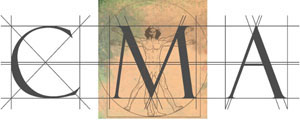Magnetic Therapy
Magnetic Therapy is the use of magnets to aid healing by influencing the body’s natural bioelectrical currents.
This document provides general information on what to expect when you visit a therapist, as well as explaining briefly how the discipline works. It must be noted, however, that every therapist works in an individual way, and may subscribe to slightly different theories as to how the practice is carried out. It is always advisable that you ask to see relevant qualifications and discuss the treatment offered to you by the practitioner if you are in any doubt whatsoever.
What is Magnetic Therapy?
This therapy is also known as biomagnetic therapy or magnetotherapy. It works on the premise that the human body cells have a magnetic force. According to practitioners, the iron atoms contained in red corpuscles, a component of blood, respond to magnetism. Magnetic therapy is based on the theory that by placing magnets on the skin, over particular areas in the body, you will increase the blood flow in that area. This has the advantage of speeding up the elimination of toxins and increasing the supply of oxygen to the cells.
Main Uses
Musculo-skeletal disorders. It can also relieve arthritis, headaches, migraines, hormonal imbalances, wound healing, problems with circulation, insomnia, and fatigue.
What to expect when you visit a Therapist
Magnet therapy is often a practice undertaken without the help of a practitioner, the magnets being used as a self-help tool. You can buy a variety of goods that contain magnets for healing purposes, such as straps, shoes, car-seat covers, pillows, and even mattresses. If you do go to a therapist you will be asked questions relating to your medical history and perhaps that of your immediate family. Lifestyle questions regarding such matters as your dietary habits, sleep patterns, exercise regime, and stress levels will also be put to you, to ensure that a holistic approach is taken.
Practitioners often use ‘super-magnets’ that emit a higher magnetic force than the ones usually marketed for self-help home-care use. These are often placed over key acupuncture points (pressure points) or over lymph ducts. You will be shown how and where to wear the magnets in-between sessions. A session with a therapist may last several minutes or several hours depending on what equipment is used.
History (In Brief)
The ancient cultures of Greece, Egypt, and China all recognised the health enhancing power of the magnet. A few centuries or so down the line the Viennese physician Franz Anton Mesmer (1743-1815) championed their use, believing magnets to enhance the use of ‘animal magnetism’ or hypnotism as a therapeutic technique. These days magnetic therapy is far more popular in places like Japan and Eastern Europe than it is in the West. However, conventional medical practices are now using devices that emit strong electromagnetic fields to help heal fractures.

